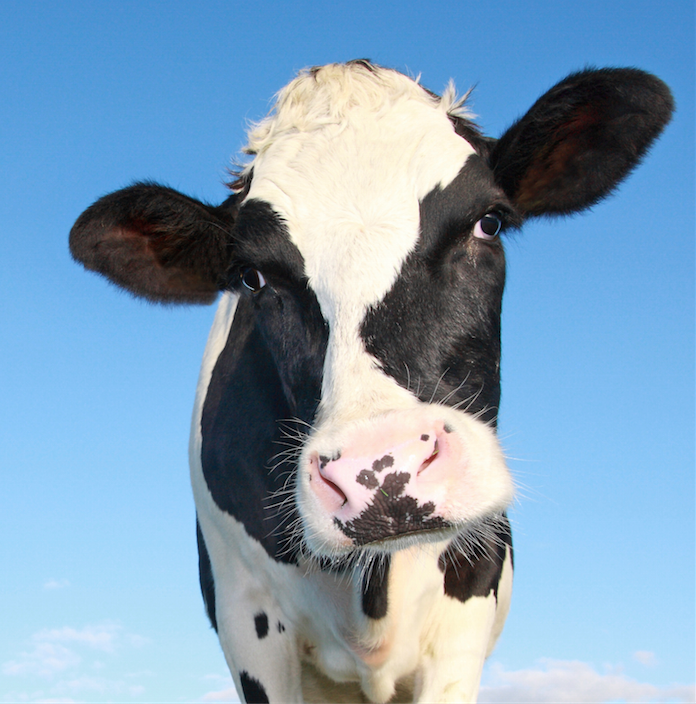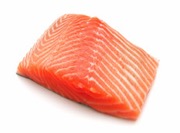If you’ve been sucking up the extra cost of organic dairy products and grass fed beef, comforted by the fact that you’re doing what’s good for your body, I have some news for you: you’ve gained little more than peace of mind grounded in a marketing scam. There is no meaningful nutrition difference in organic milk, grass fed beef and their conventional (non organic / grass fed) counterparts.
The Truth about Organic Dairy
Organic milk is packed with omega-3 fatty acids, iron and vitamin D, according to an article published Feb. 16 in the British Journal of Nutrition. This meta-analysis examined the results from 170 published studies comparing the nutrient content of organic milk with conventional milk. They suggest organic milk wins by a landslide: it’s nutritionally superior to its conventional counterparts. Though there were no significant differences in saturated fat and monounsaturated fat in organic vs. conventional milk, organic milk has 56% more beneficial omega-3 fatty acids, 41% more conjugated linoleic acid (CLA), significantly more vitamin E and iron than conventional milk. Statistically speaking, they are scientifically correct. Nutritionally speaking, these differences are meaningless.
Organic milk contains 56% more omega-3 fats than regular (conventional) milk (56% more based on the total fat content). However, statistically more than a little bit is still a little bit. Milk is not considered a major source of omega-3 fatty acids in the diet, regardless of milk type. In fact, according to one study, 1 cup of organic whole milk has about 8.2 mg of the omega-3 fatty acid eicosapentaenoic acid (EPA) and 11 mg of docosahexaenoic acid (DHA) compared to 6.2 mg of EPA and 9.1 mg of DHA. That’s a far cry from the 250 – 500 mg of EPA + DHA we should get, on average, each day. Fatty fish are the best way to get EPA and DHA.
Conventional Milk:
15 mg EPA + DHA
Herring, Wild
Salmon, Farmed (Atlantic)
Salmon, Wild (King)
Mackerel, Wild
1,200 mg EPA + DHA
- EPA and DHA are heart smart – they lower blood fats (triglycerides) and blood pressure. Plus they’re good for your brain and eyes.
What about CLA? CLA is group of polyunsaturated fatty acids found in meat and milk. There are many proposed benefits associated with CLA including changes in body fat with ultra high supplemental doses of CLA. However, the difference in CLA content is also biologically meaningless – 56 mg in a glass of organic whole milk and 47 mg in a class of conventional whole milk.
The British Journal of Nutrition research also showed slightly higher beta carotene and vitamin E in organic milk. These very small differences may be due to a host of reasons including seasonal variation and breed. Milk is not a major source of these nutrients, so this has no biological impact on human health. If you want iron, eat more red meat, fish and poultry or plant-based sources including beans, lentils and peas (eat these with a vitamin C rich food to increase the absorption of plant-based iron). For vitamin E your best bets are oils, nuts and seeds.
- Key point: statistical significance ≠ biological relevance.
What about antibiotics and hormones in dairy? I covered that in another blog post. You can read more about it here.
Is Grass Fed Beef Better?
If you’re one of many Americans paying a premium for grass fed beef because it contains more omega-3s and less saturated fat than it’s unassuming conventional counterparts, it may be time to reconsider where you’re spending your grocery money.
The omega-3s in grass fed beef are different than the kind in fatty fish. Fatty fish and algae contain EPA and DHA. There’s a third omega-3 fatty acid, alpha-linoleic acid (ALA), found in plants including walnuts, soybeans, pumpkin seeds, flaxseeds and chia seeds. Grass fed beef contains ALA because flaxseeds are added to their feed. While EPA and DHA lower blood fats (triglycerides) and are tied to heart benefits, ALA does not lower blood fats and is not associated with the same heart health benefits. ALA rich foods also contain a variety of other bioactive compounds that may act independently or synergistically to improve cardiovascular disease risk factors (eat the whole food not just ALA). The human body can convert ALA to EPA and DHA but this conversion process is inefficient. Less than 4% of ALA is converted to EPA and less than 1% makes its way to DHA. ALA ≠EPA + DHA. A 5-ounce serving of grass fed beef contains a whopping 20 to 30 mg of ALA (slight variations in brands of grass fed beef based on the cow’s diet). The Adequate Intake for ALA is 1,600 and 1,100 grams per day for adult men and women, respectively. Eat grass fed beef and you’ll get 2 – 3% of the AI for ALA for men and 1-2% for women.
Grass fed beef and conventional beef have the same amount of saturated fat with some differences in the types of saturated fatty acids. The difference in CLA content of grass fed and conventional beef is tiny. According to a review from Dave et al. (Nutr J 2010;9:10), it ranges from 0.13 – 2.65 (grams CLA/100 grams of fat in the meat) in conventional meat and 0.43 – 5.14 (grams CLA/100 grams of fat in the meat) in grass fed beef depending on the cow and feed. So, you could be getting less total CLA in certain cuts of grass fed beef than conventional beef.
What about the Bacteria in Conventional Beef?
You cook your beef right? Bacteria is killed during cooking. Moot point.
Is Grass Fed More Sustainable? What about Hormones and Antibiotics?
I will address this and other issues in the next post. Stay tuned….
Organic dairy products and grass fed beef come in beautiful, higher end packaging with natural hues of green and brown outlining their superiority to modest looking products that sit beside them on store shelves. If you love the taste, stick with your organic milk and grass fed beef. But don’t buy into the marketing hype.
References
Circulation 2011;123(20):2292-333.
British Journal of Nutrition 2016;115:1043–1060.
PLoS One 2013; 8(12): e82429.
American Journal of Clinical Nutrition 2001;74:612–9.
American Journal of Clinical Nutrition 1999;69:890–7.
British Medical Journal 1996;313:84–90.
American Journal of Clinical Nutrition 2009;89(5):1649S-56S.
American Journal of Clinical Nutrition 2006;83(6):S1526-1535.
PLoS One. 2013; 8(12): e82429.
Nutrition Journal 2010, 9:10.



Pingback: 37 Secrets and techniques Nutritionists Gained’t Inform You for Free - Norah's Fitness Magazine
You mentioned the CLA difference is small between grass-fed and conventional beef and milk. So what would be a good natural source of CLA, enough to satisfy our daily nutritional needs?
You don’t need any CLA (it’s not an essential fat, one you must ingest because you don’t get it through food) though you probably get some in your food each day.
Pingback: The Truth behind Cage Free, Free Range, Antibiotic Free
Trystan, as far as the environment goes, other than pesticides, inorganic farming is greener than organic because more land is used for organic and also more methane gas is produced when cows eat grass and veggies (based on the findings I read though you may have read different statistics.) However, the pesticide thing along with hormones and antibiotics are enough to keep me buying organic, that is when we do buy meat. We have cut down on meat, and particularly red meat, but not because of nutritional values discussed in this article.
Thanks for your post!